- Home
- Military & Defense
- THE BONEYARD: Where Air Force Birds Go To Die
THE BONEYARD: Where Air Force Birds Go To Die
Aircraft from all military services cover the desert landscape of the 309th Aerospace Maintenance and Regeneration Group "Boneyard" at Davis-Monthan Air Force Base, Ariz.

An old, weathered flight manual sits inside the remains of a CH-3E Jolly Green Giant. After years of standing in the desert sun of the boneyard, aircraft and equipment slowly age and erode.
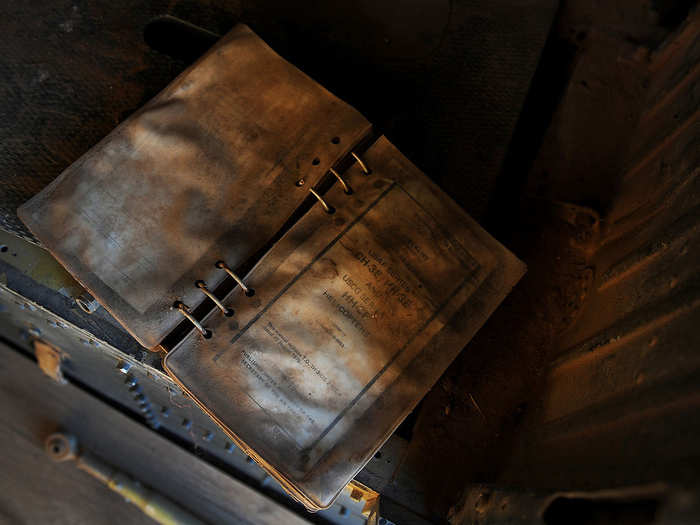
The Boeing YAL-1 Airborne Laser Testbed, (formerly Airborne Laser) weapons system now sits decommissioned in the boneyard. The YAL-1 was primarily designed as a missile defense system to destroy tactical ballistic missiles with an airborne laser system.

The cockpit section of a C-141 Starlifter sits dissected and strapped to the ground.
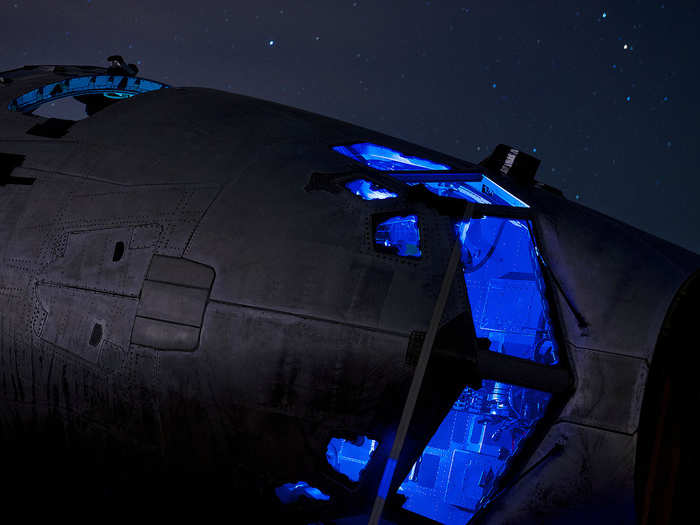
The C-141 remained in service for over 40 years until the Air Force withdrew them from service in 2006 and replaced them with the C-17 Globemaster III.
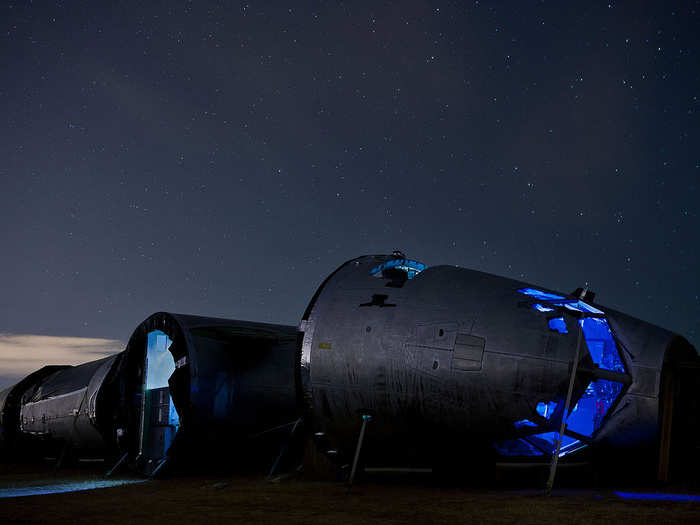
A fleet of C-5 Galaxies tower above the rest of the fighter and cargo aircraft inside the "Boneyard."
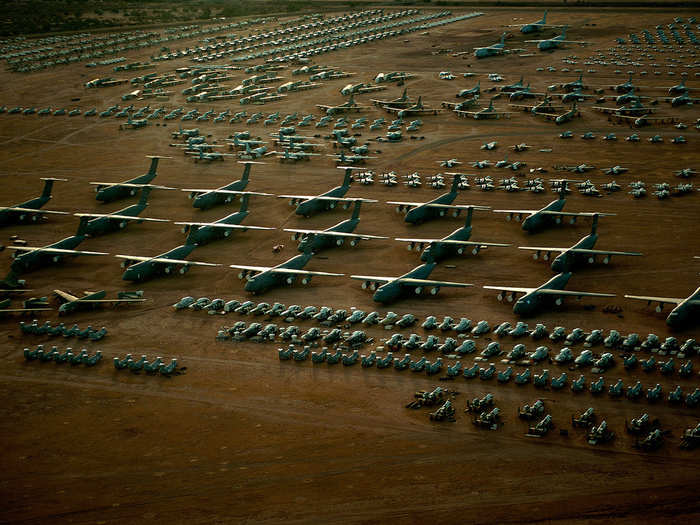
Rows of F-4 Phantoms and T-38 Talons line the grounds.
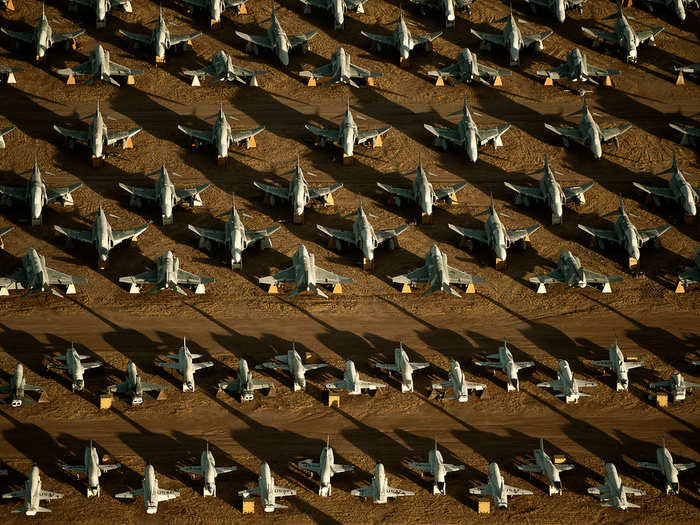
A rainbow peaks at the old unused fleet of F-4 Phantom fighters.
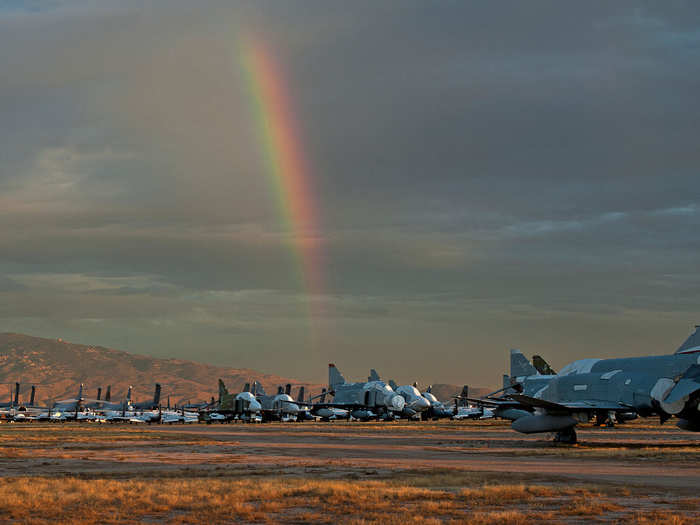
The F-4 Phantom II served as the principal air superiority fighter for the Air Force during the Vietnam War, and became important in the ground-attack and reconnaissance roles late in the war.
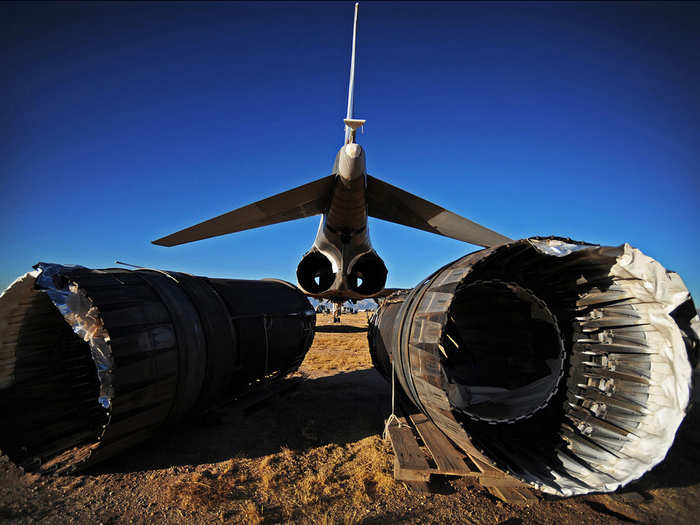
Retired Brig. Gen. Keith Connolly, a command pilot with more than 4,800 flying hours in F-86s, F-100s, A-7s, F-4s, F-15s and F-16s, stands before a retired F-4 Phantom.
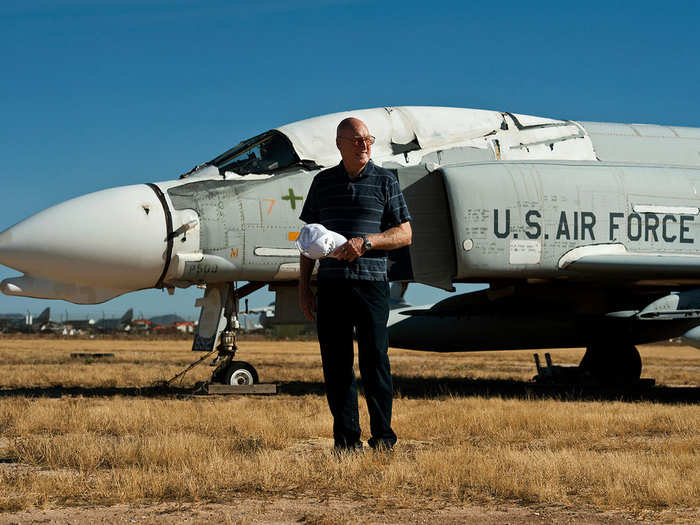
The F-4 Phantom II has the distinction of being the last U.S. fighter flown to attain ace status in the 20th century.

More Phantoms, used, abused and now wholly unused, except for possibly the occasional critter.
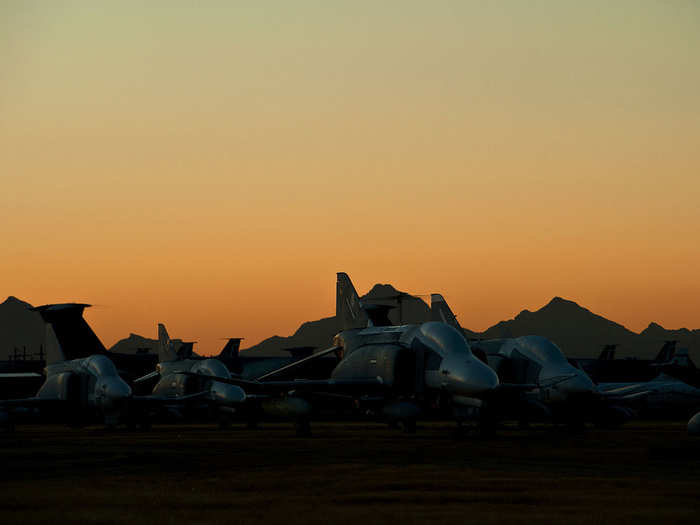
The remains of a B-66 Destroyer sit palletized. The aircraft was a light bomber with the Tactical Air Command and the RB-66 models were used as the major night photo-reconnaissance aircraft for the Air Force during the 1950s.
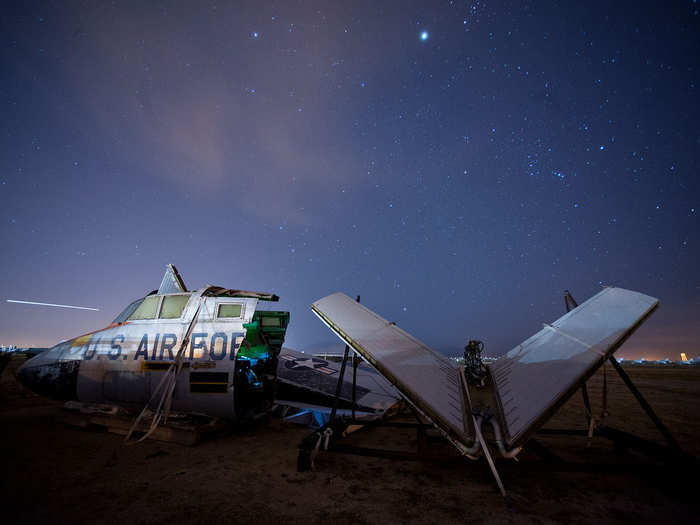
Another F-4 Phantom surrounded by the twilight of a falling sun.
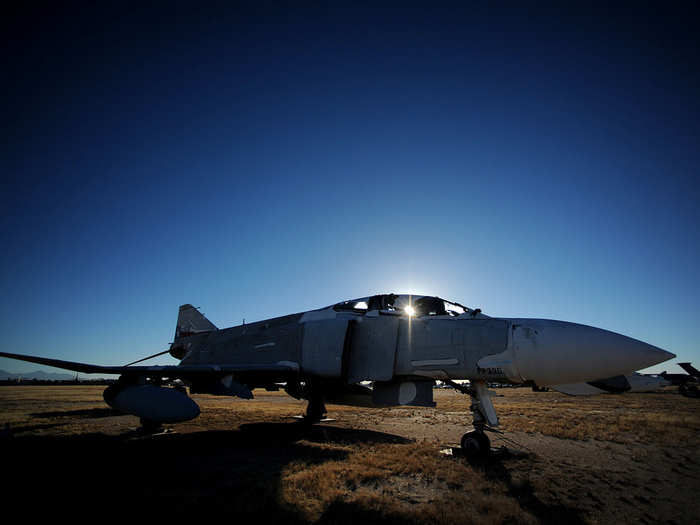
The Arizona desert is a natural selection to house for the Air Force's only aircraft "boneyard" due to the lack of rust and metal deterioration with the lack of humidity in the desert.
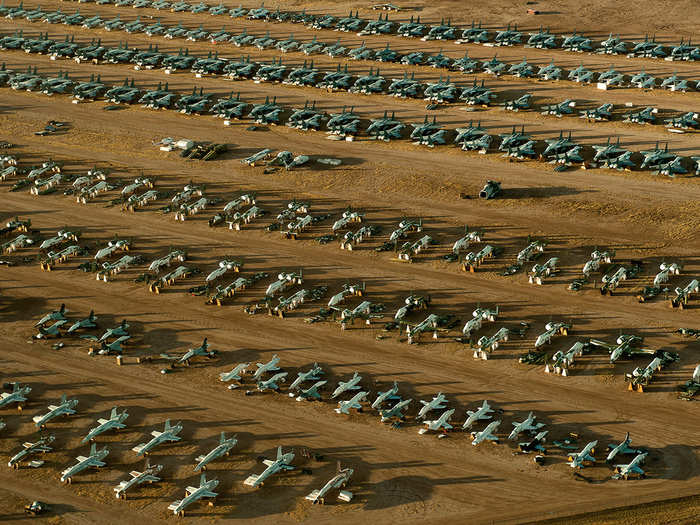
The Air Force "Boneyard" is at a secure location in Ariz. The facility is seldom seen by the public, outside of local bus tours and as a backdrop of Hollywood movies and television shows.
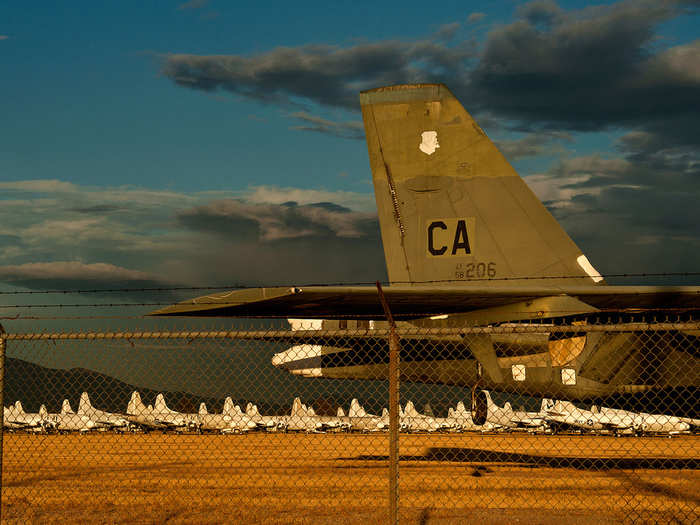
Ripped and torn pieces of the fuselage are all that remain of a C-5 Galaxy after being torn apart by an excavator crane for scrap.
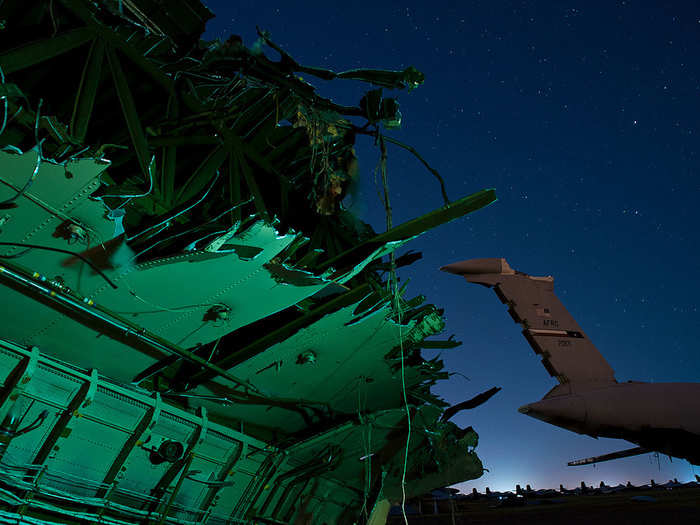
The boneyard is basically a 2,600-acre parking lot and storage facility for about 5,000 retired military aircraft.
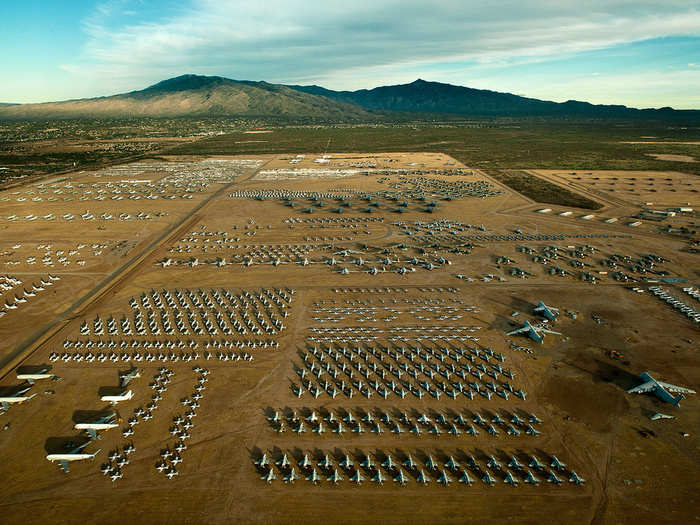
The remains of a C-5 Galaxy rise six stories into the night sky.
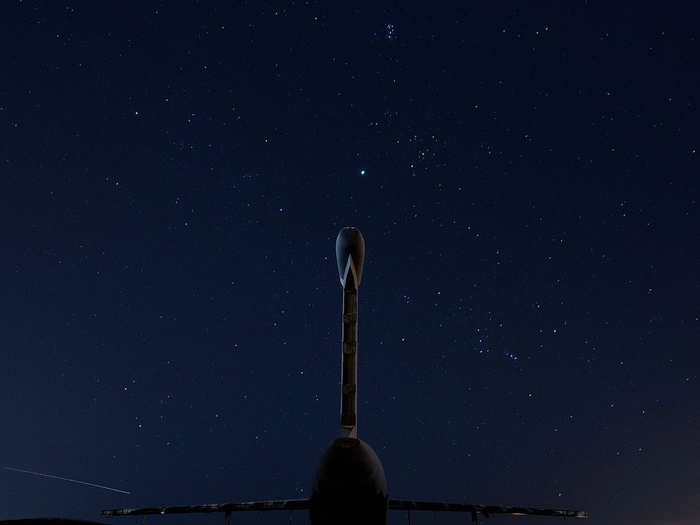
Tails of decommissioned aircraft sit against the backdrop of a setting sun.
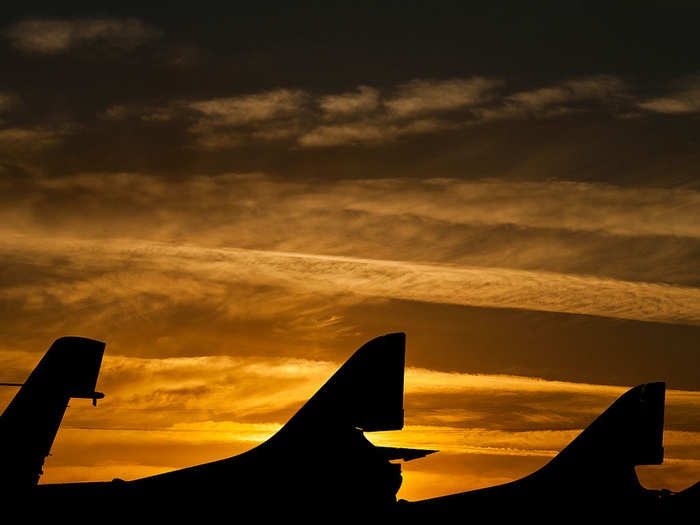
A C-5 Galaxy, its wings stripped to the frame, is undergoing a complete tear-down of all important parts before being demolished for scrap, a process that takes nearly a year to complete.
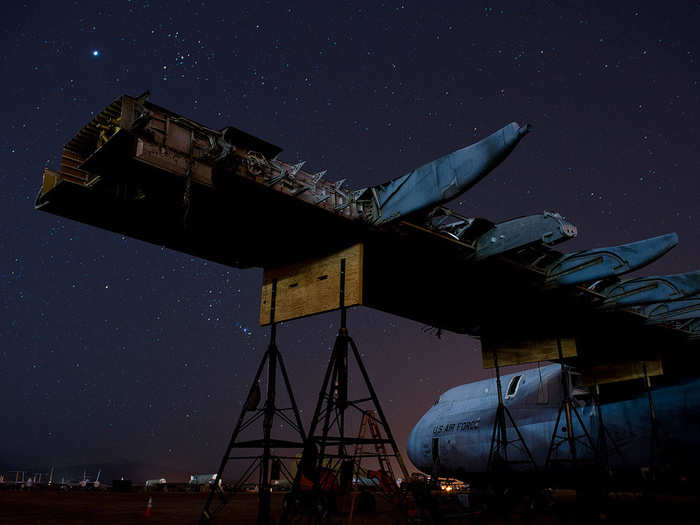
Wings and parts are pulled from the C-5 Galaxy aircraft before the airframes are torn apart for scrap.
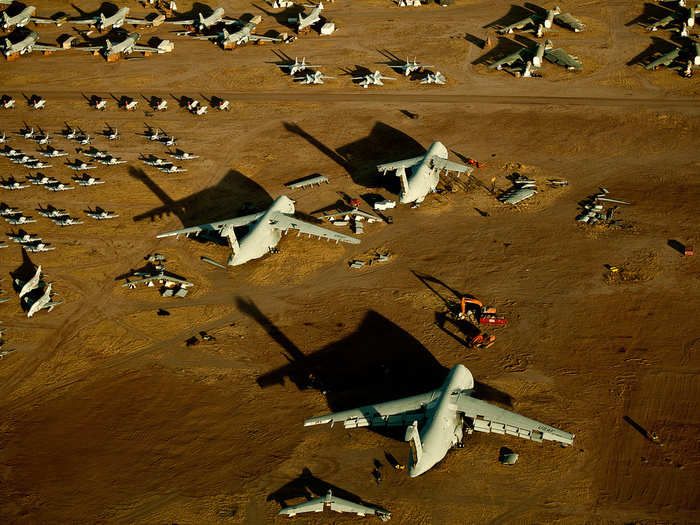
The rows of F-15 Strike Eagles and F-16 Fighting Falcons undergo a preservation process that allows them to be recalled into active service within 72 hours if needed.
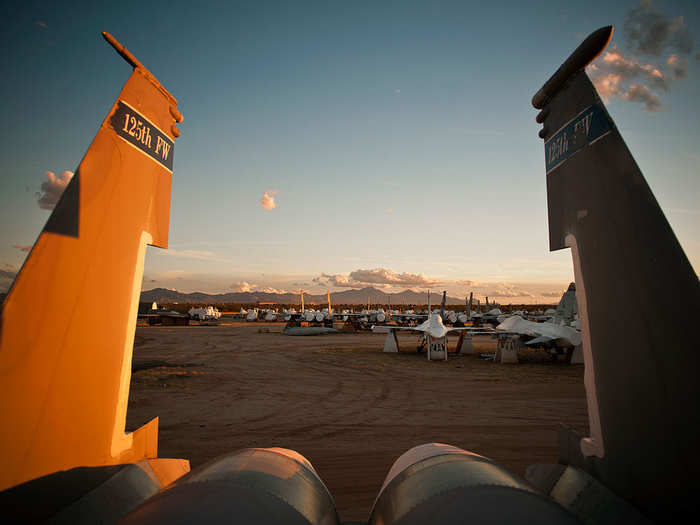
A C-130 from the 43d Air Wing, Pope Air Force Base, N.C., peers deeper into the boneyard.
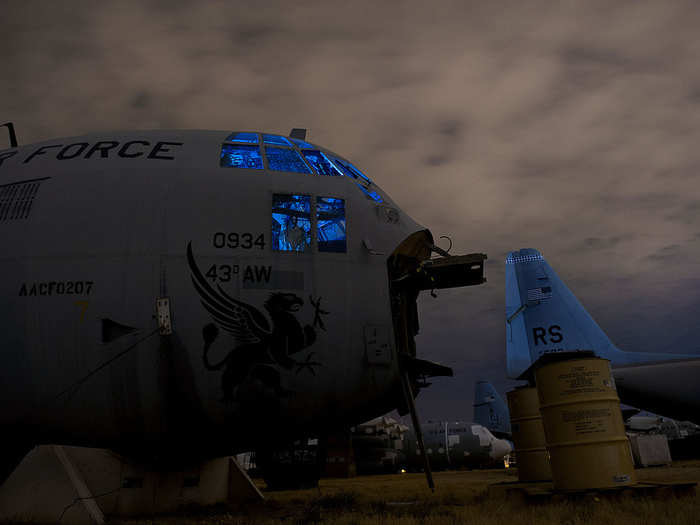
The remains of a B-66 Destroyer seen through the shattered cockpit glass of an F-86 Sabre.
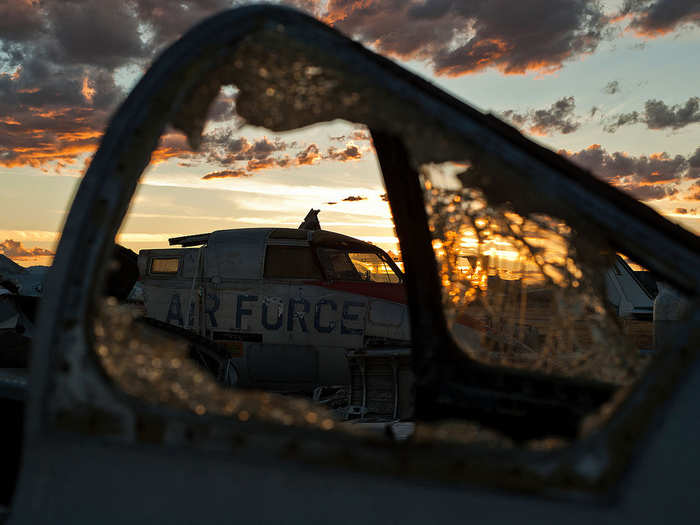
The fuselage of an A-10 Thunderbolt II sits surrounded by the rest of its parts. Aircraft like this are typically used to provide parts to other A-10s still serving throughout the Air Force.
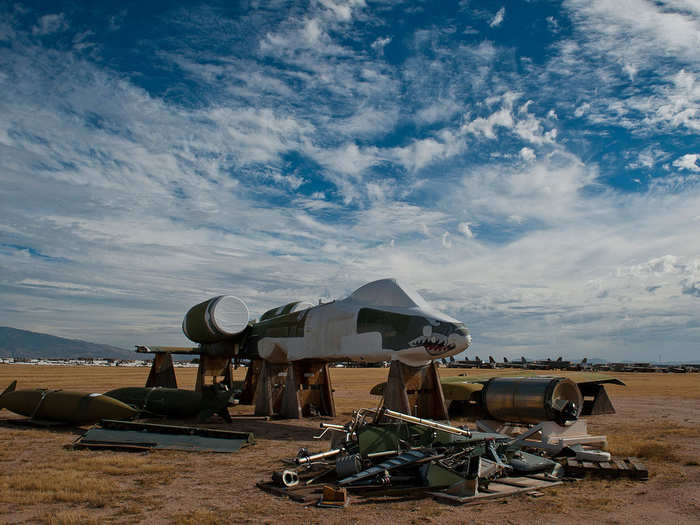
Ret. Col. Paul Dillon, a vietnam combat pilot, stands with an A-10 Thunderbolt II. The jet is one of the many airframes the colonel flew while in the Air Force. Dillon is wearing his 469th Tactical Fighter Squadron flightsuit from his duty in Vietnam were he flew interdiction operations in North Vietnam and Laos.
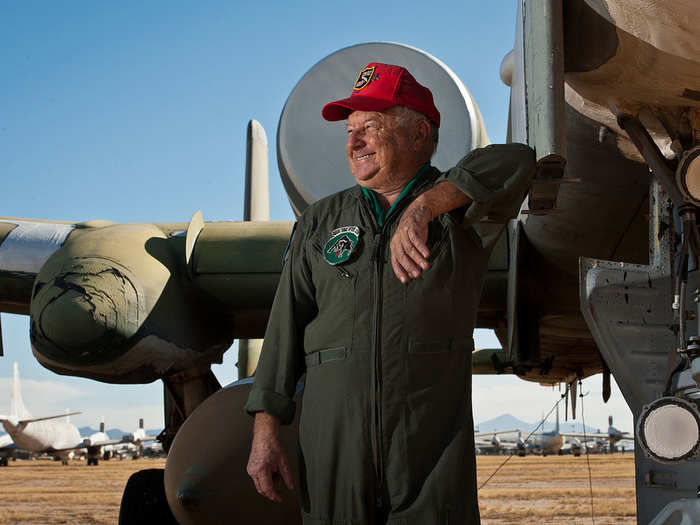
The Phantom sits, still somewhat preserved. Still visible are the influences of it's predecessor, the F-8 Crusader.
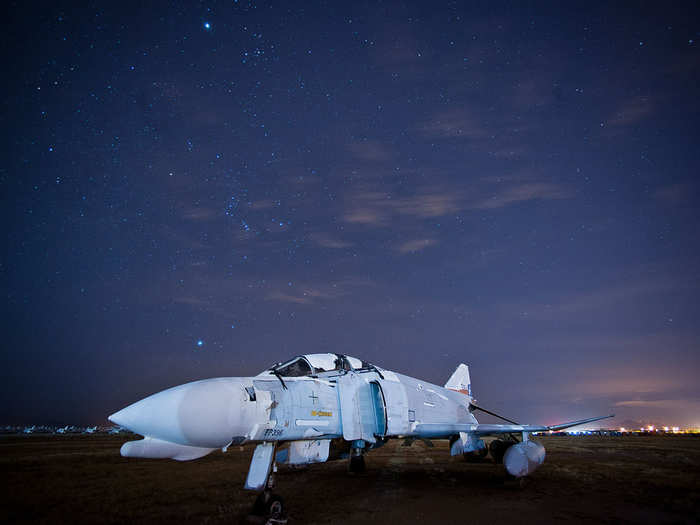
Interminable rows of dismantled KC-135 Stratotanker stretch into the desert. The Air Force still actively fields hundreds of these for refueling purposes.
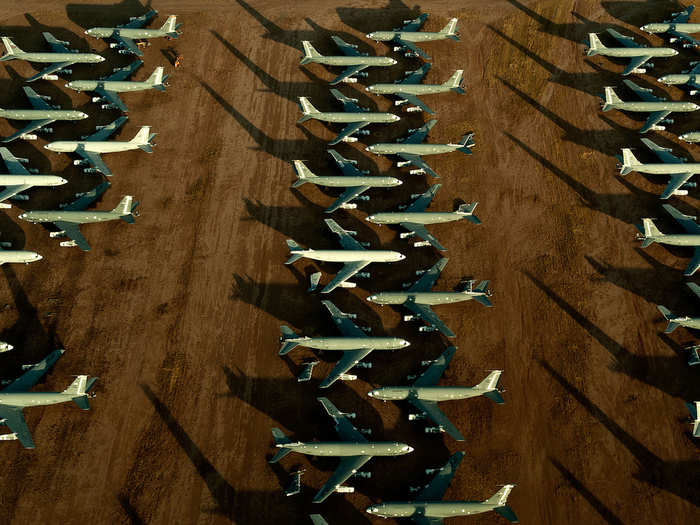
A C-5 Galaxy waits to be broken down and turned into scrap metal — The 309th Aerospace Maintenance and Regeneration Group then sells the scrap metal to other customers.
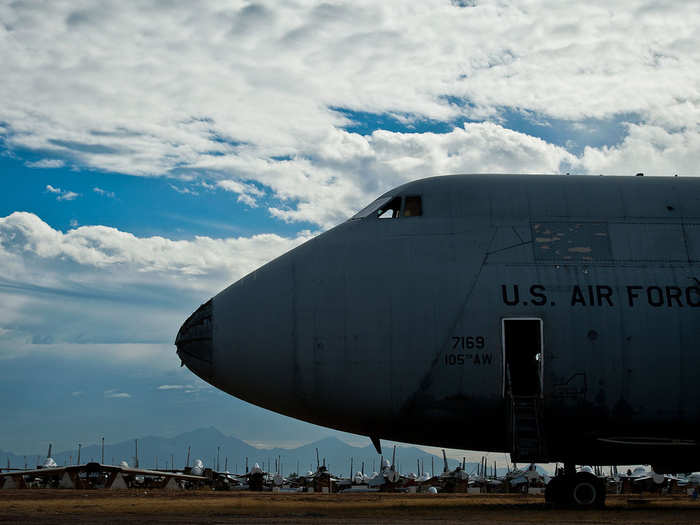
High above the ground, a C-5 Galaxy aircraft sits motionless as clouds pass by. The Galaxy used to be the Air Forces a premier military transport aircraft.
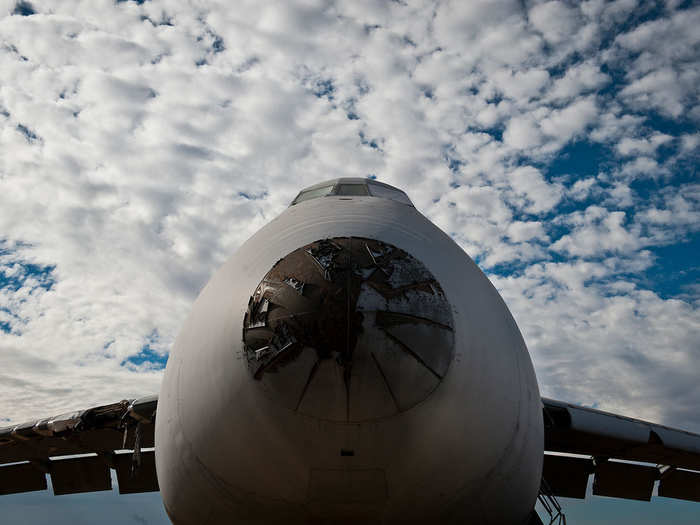
The North American F-86 Sabre was a transonic jet fighter aircraft mainly used during the Korean War and the early parts of the Cold War era.
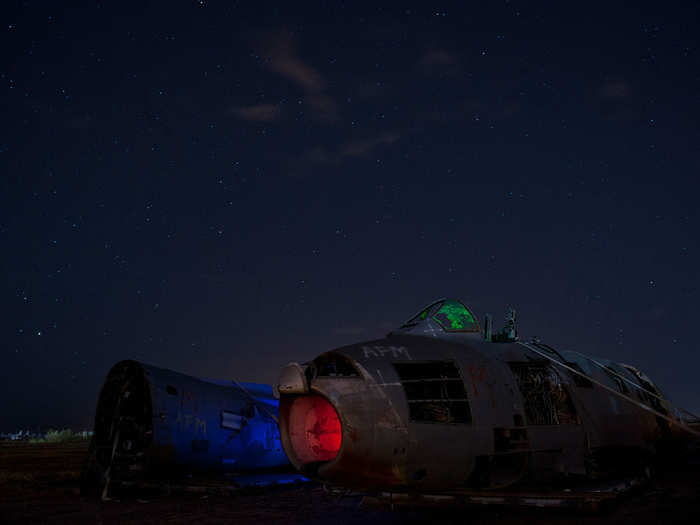
The B-66 Destroyer was a U.S. Air Force Tactical Air Command light bomber. The RB-66 models were used as the major night photo-reconnaissance aircraft of the USAF during the 1950s.

Cracked and rusted gauges from an old blimp show the signs of sitting unused for decades.
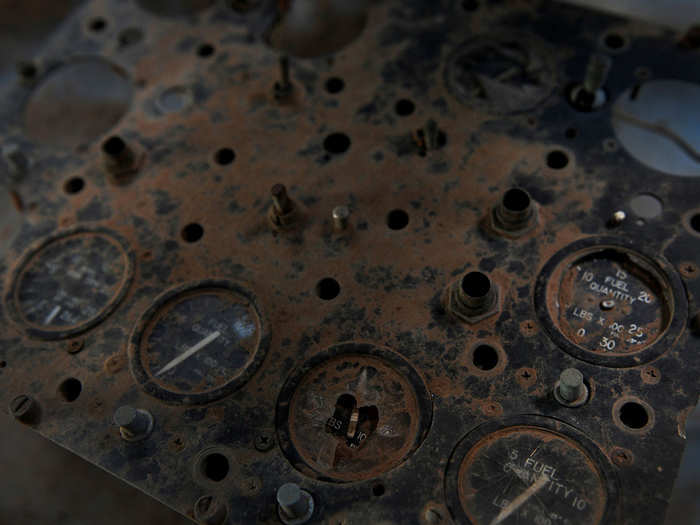
A UH-34D Seahorse helicopter, which began service in 1952 as a Navy anti-submarine warfare helicopter and served as the primary Marine Corps assault helicopter of the Vietnam War. This one now sits as part of the more than 4,400 deactivated aircraft.
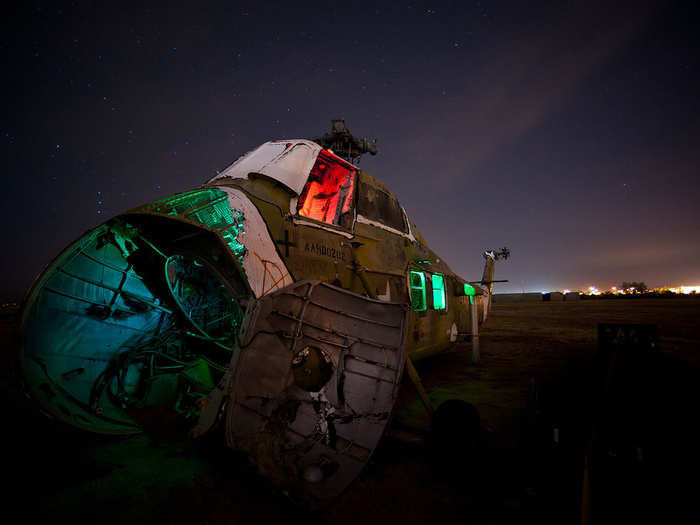
Inside the belly of the blimp.
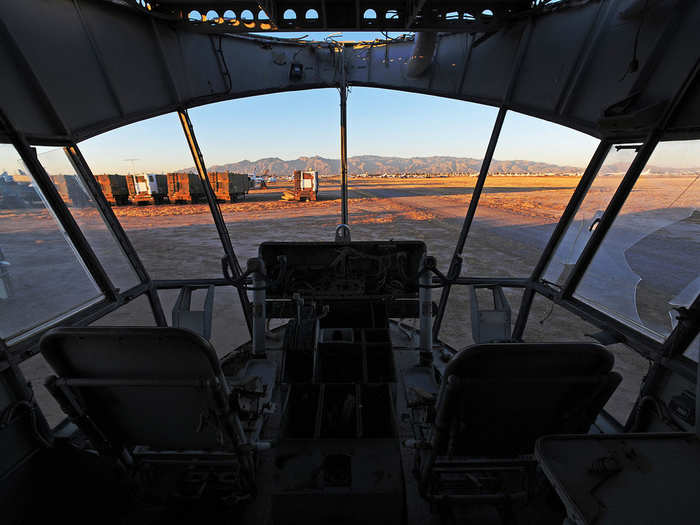
Marilyn Savage, widow of Lt. Col. Robert Savage, joined the Air Force in October of 1951 and was discharged in 1953 as a sergeant. She is a past president of the Society of Military Widows and has been a member of the group for more than 20 years. Her husband piloted the F-84 Thunderjet similar to the one behind Marilyn.
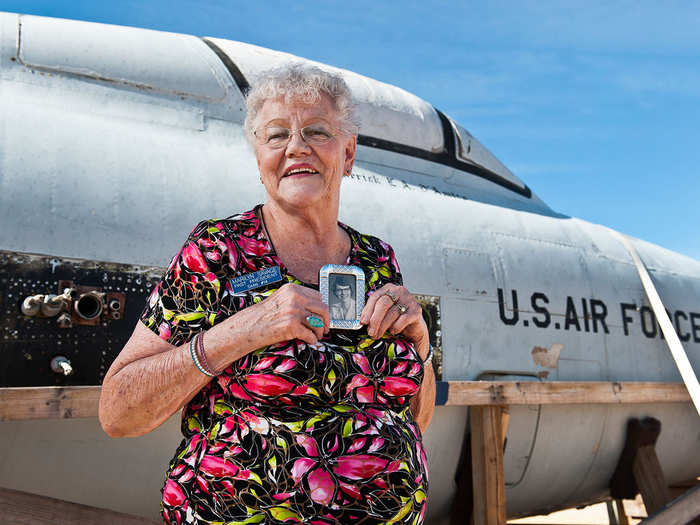
A retired, rusted, faded T-38 Talon sits in pieces. The Talon was the world's first supersonic trainer.
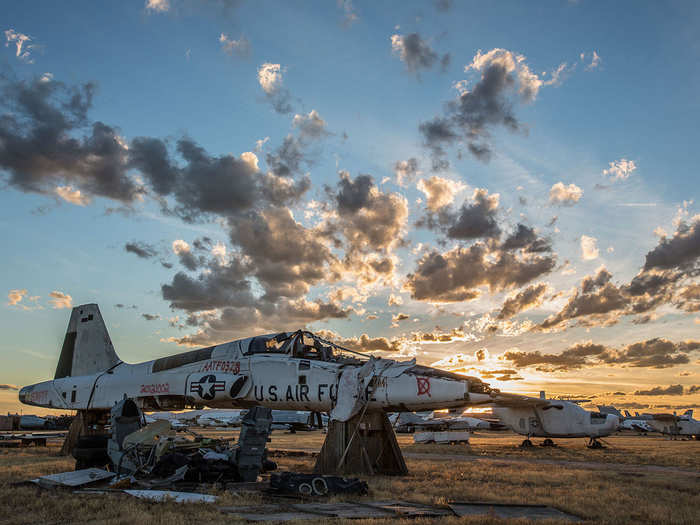
The T-41 Mescalero was the military version of the popular commercial Cessna 172. Rows of them sit in the boneyard.
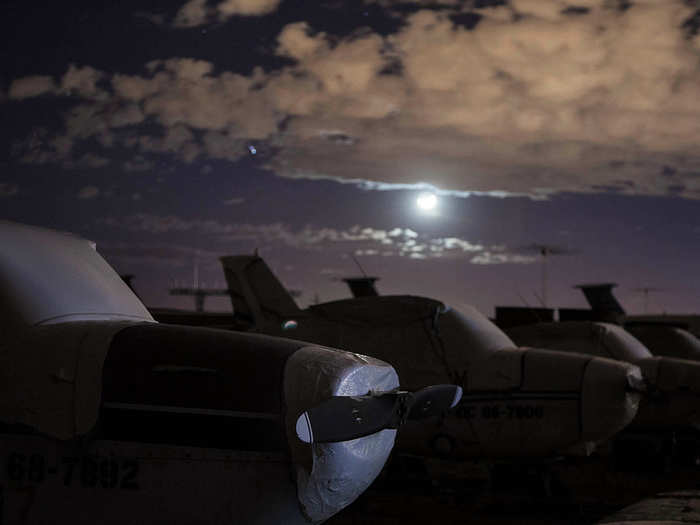
The "Boneyard" hosts civilian aircraft as well, like this commercial cargo plane.
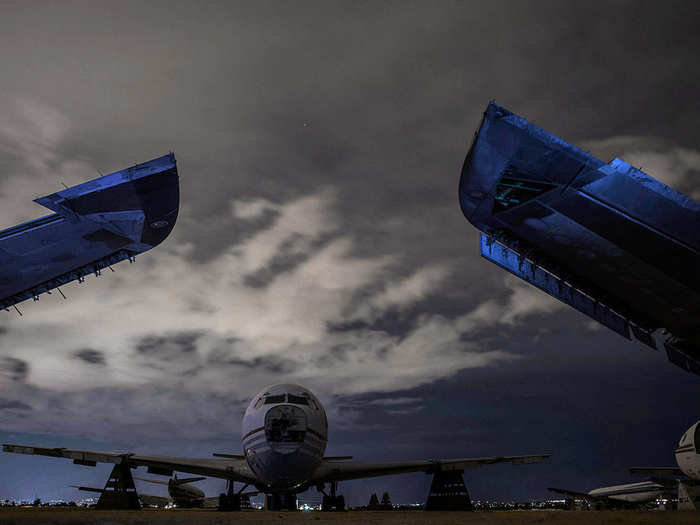
A set of pilot seats are all that remain of an unidentified aircraft.
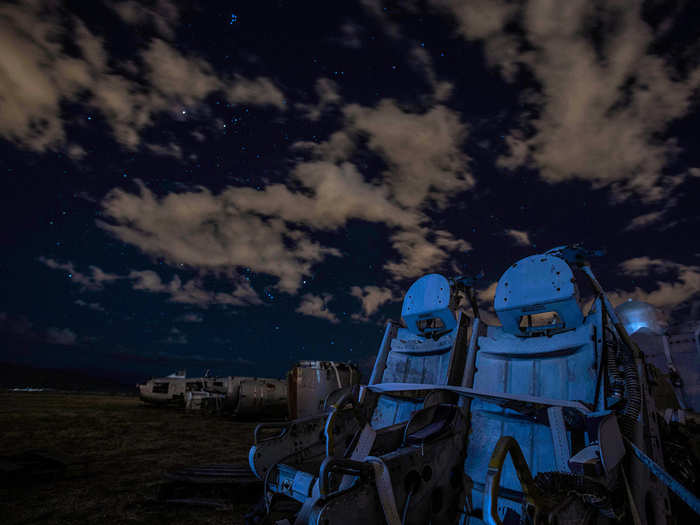
If anything, the graveyard serves as a grim reminder of the necessities for military air power.
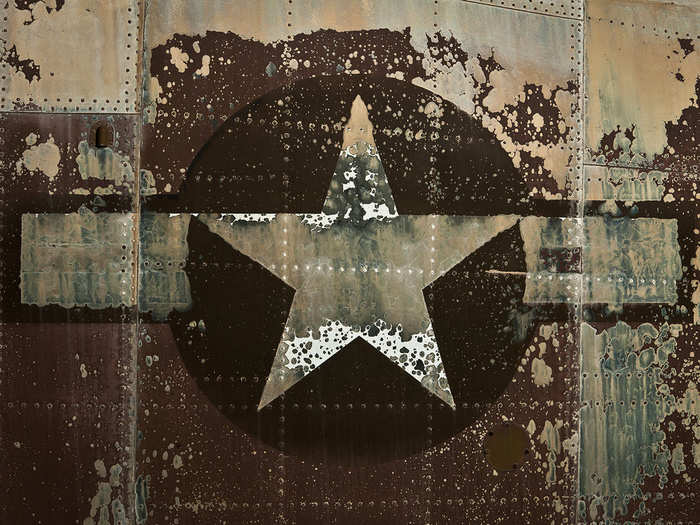
You've seen pictures of the U.S. military's exclusive boneyard ....
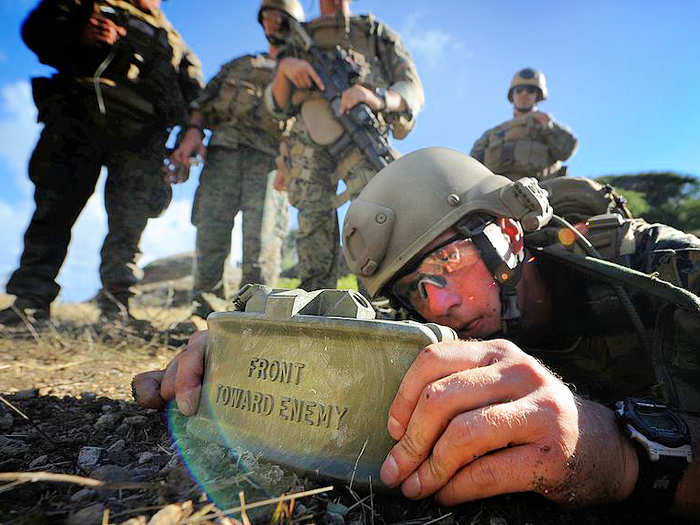
Popular Right Now
Popular Keywords
Advertisement